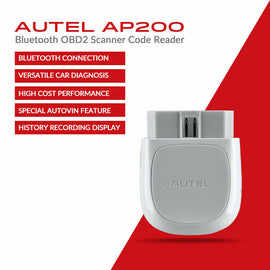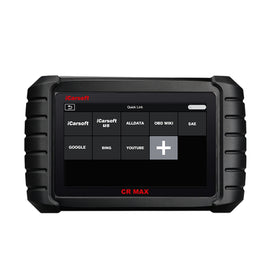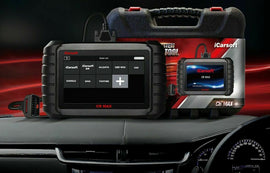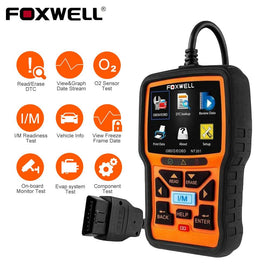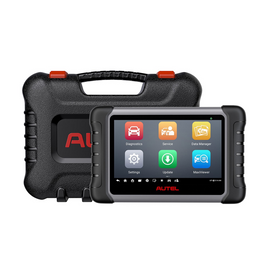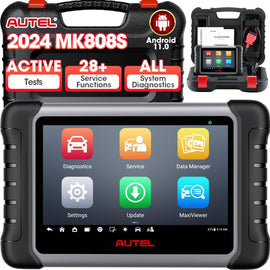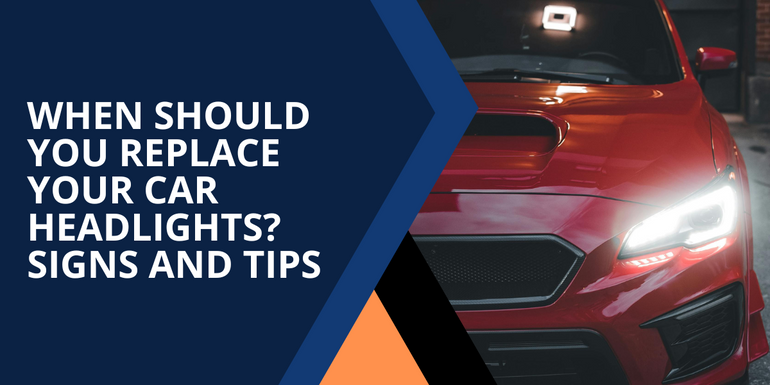Driving without properly working headlights isn't just risky — it's nearly impossible once the sun goes down. While we often take them for granted, headlights are crucial for your safety, especially on long, dark roads. But like every part of your car, headlights wear out too. Whether it's gradual dimming, unexpected flickering, or damage from accidents, even the most advanced halogen headlights for cars have their limits.
So, if your headlights begin to dim, flicker, or one beam is weaker than the other, it's time to consider replacements to ensure you're not compromising road safety.
But have you ever pondered how frequently you should perform these checks, or what the ideal type of headlamp replacement is? Understanding the indicators of headlamp deterioration and the benefits of timely changes can significantly improve your driving safety and experience.
Top Signs of Failing Car Headlights
A major sign that your car's headlights, LED auto headlights, or other lights are not performing is that you are unable to see clearly at night. But it's better to prevent trouble than to get into it. So, when to replace car headlights?
-
Car Headlights are Dim
Headlights lose their luster with time, so if yours appear dimmer than before, it's a good clue they're nearing the end of their life and will burn out shortly. If this occurs, take your vehicle to a nearby Auto care shop in Australia for a rapid repair.
-
Headlights are Flickering
Flickering headlights may not be burning out. They may be flashing due to a faulty light connection or some internal issue. In either case, a car repair professional should evaluate the flickering headlights.
-
Blown Fuses
Blown fuses can interrupt the light to your headlights. While they may indicate that your headlights need to be replaced, they can also indicate that your car has greater lighting issues that must be addressed. If you frequently blow fuses, get your car properly serviced as soon as possible.
-
Dark Spots & Uneven Lighting
If you observe dark patches, uneven brightness, or one headlight is brighter than the other, it could be a sign that your headlights are misaligned or broken.
Also, if neither of your headlights turns on, it's time to replace them. Immediate replacement is essential for safe driving.
-
Signs of Water Damage
To protect the bulbs from water exposure, most headlight sets incorporate a watertight seal. This seal may deteriorate over time due to normal use.
This means that water can slowly build up inside the case, affecting the quality of light coming from your headlight bulbs. This frequently results in scattered beams of light.
Importance of Regular Checks
Regularly inspecting your car's headlights every six months ensures top performance and safety during nighttime driving. This routine check is critical because it allows you to discover issues such as decreasing lights or uneven brightness, which are clear signs that your headlights need to be replaced soon.
-
If your night vision is blurry or one headlight appears brighter than the other, it may be time for a replacement.
-
Foggy lenses can significantly reduce your visibility, jeopardizing your safety and the safety of others on the road. Regular inspections help you to detect these issues early, ensuring that your car's headlights are always in good condition.
-
If you discover a broken headlight or if beam tests during your inspection reveal a failing light output, make an appointment for headlight repair or replacement.
Can I Restore Plastic Headlight Lenses?
Yes, you can replace plastic headlamp covers. When your vehicle's headlights get dimmer or duller, it is possible that the problem is with an old headlamp lens rather than the bulb.
Headlight lenses can turn yellow, foggy, murky, or condensed, reducing headlight brightness. A headlight restoration kit is useful, but we recommend that an automotive repair specialist install a new headlight assembly made of excellent plastic or a similar material.
Are Faulty Headlights A Bigger Issue?
Faulty headlights are a serious problem, which is why it is unlawful to operate a vehicle without one or more functioning properly.
For example, headlights that are faulty emit around 20% less light than those in good condition, which can affect vehicle safety. Furthermore, defective headlights may flash overly brightly, creating a hazard for oncoming traffic.
When to Use High Beams?
Only use full-beam headlights on unlit sections of road at night.
When approaching oncoming traffic (including cyclists and pedestrians), following another vehicle, or driving on left-turning curves, turn off your full-beam headlights, as they may dazzle and cause accidents.
Conclusion
Keeping your headlights in top condition is crucial for safe driving, especially at night. If you've noticed dimming, flickering, or uneven beams, it’s time to act. Regular inspections and timely replacements help prevent bigger issues down the road.
If you’re looking to buy car headlights in Australia, Auto Lines Australia offers a trusted range of premium options to keep your vehicle road-ready. From halogen to LED headlights, you’ll find the perfect match for your car and driving needs. Stay safe, stay visible — and trust Auto Lines Australia for quality headlight solutions you can rely on.


